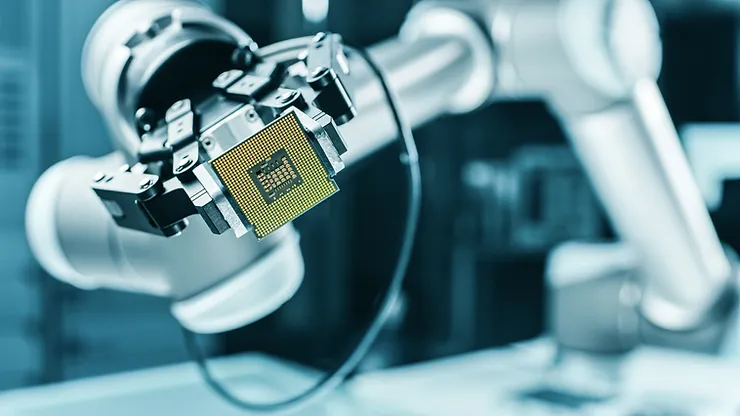Deep learning neural networks are a type of artificial intelligence inspired by the structure and function of the human brain. These networks can learn and make decisions independently without explicit programming. In recent years, deep learning neural networks have made significant strides in various fields, including computer vision, natural language processing, and speech recognition.
There are several different types of deep learning neural networks, each with its own unique characteristics and capabilities. Here are a few examples:
-
Convolutional Neural Networks (CNNs): These are commonly used in image and video recognition tasks. They can process and recognize patterns and features in images and videos by applying filters and pooling layers.
-
Recurrent Neural Networks (RNNs): These are well-suited for tasks that involve sequential data, such as language translation and speech recognition. They can temporally process data, taking into account the order and context of the data.
-
Autoencoders: These are unsupervised learning algorithms that can learn to compress and reconstruct data. They are often used for dimensionality reduction and feature extraction.
-
Generative Adversarial Networks (GANs): These consist of two networks collaborating or "competing" to generate new, synthetic data or predictions. They are commonly used for tasks such as image generation and style transfer.
-
Self-Organizing Maps (SOMs): These are unsupervised learning algorithms that can learn to project high-dimensional data onto a lower-dimensional map. They are often used for visualization and data exploration.
Neural networks have the potential to revolutionize various fields and industries. As these technologies continue to advance, we can expect to see even more impressive achievements and applications in the future. Natural Language Processing (NLP) systems are becoming extremely popular with many applications.
-
Natural language processing focuses on understanding, interpreting, and generating human language. NLP systems can be used for various tasks, such as language translation, text summarization, and sentiment analysis.
-
One type of deep learning neural network commonly used for NLP tasks is the Long Short-Term Memory (LSTM) network. LSTMs are classified as a type of recurrent neural network, processing data with long-term dependencies. They can "remember" past information and use it to inform the processing of current data, making them well-suited for tasks such as language translation and modeling.
Other Specialized Deep Learning Neural Networks
Many specialized deep-learning neural networks have been developed for specific tasks or applications. Here are a few examples:
-
Capsule Networks: These are neural networks that use "capsules" to process data. Capsules are groups of neurons that can process and recognize specific features or parts of an input. Capsule networks are effective for tasks such as image classification and object recognition.
-
Graph Neural Networks: These are a type of neural network designed to process data represented in the form of a graph. They are able to analyze the relationships between different data points and use this information to make predictions or decisions. Graph neural networks have been applied to tasks such as recommendation systems and social network analysis.
-
Deep Belief Networks: These are a type of generative model that can learn to reconstruct data by "unrolling" a deep network into a series of simple, interconnected layers. Deep belief networks have been used for feature learning and dimensionality reduction tasks.
Newer Methods of Deep Learning
As deep learning technologies continue to evolve, new methods and approaches have been developed that improve the performance and capabilities of neural networks. Here are a few examples of newer methods that have gained popularity in recent years:
-
Attention Mechanisms: These are techniques that allow a neural network to "attend" to certain parts of the input data when making a prediction or decision. Attention mechanisms are effective for tasks such as natural language translation and image captioning.
-
Transfer Learning: This method allows a neural network to reuse the knowledge and capabilities it has learned from one task and apply them to a related task. Transfer learning can significantly reduce the amount of data and computational resources required to train a neural network for a new task.
-
Adversarial Training: This is a method that involves training a neural network to "defend" against adversarial examples, which are inputs that are specifically designed to fool the network. Adversarial training can improve a neural network's robustness, generalization, and overall performance.
-
Meta-Learning: This is a method that involves training a neural network to learn how to learn. Meta-learning algorithms are able to learn from a large number of tasks and use this knowledge to adapt to new tasks more quickly and effectively.
Potential Uses for Deep Learning Neural Networks
The potential applications of deep learning neural networks are vast and varied. Here are a few examples for these technologies:
-
Predictive Maintenance: Deep learning neural networks could be used to predict when equipment will fail, thus allowing for proactive maintenance and reducing any downtime a system may experience.
-
Disease Diagnosis: Future systems could be used to analyze medical images and diagnose diseases accurately.
-
Traffic Prediction: AI systems are being used to predict traffic patterns and optimize routing and scheduling for transportation systems.
-
Personalized Education: Personalized AI systems could generate student learning plans. These systems can analyze their strengths, weaknesses, and learning style to efficiently construct the best path towards a universal level of education across all performance metrics.
-
Speech Synthesis: NLP AI models can train voice clones that sound like the original speakers through analyzing their voices and creating a digital replica. Generation can occur through text-to-speech (TTS) or speech-to-speech (STS).
